List of [20] Tropical Plants with Images and Care
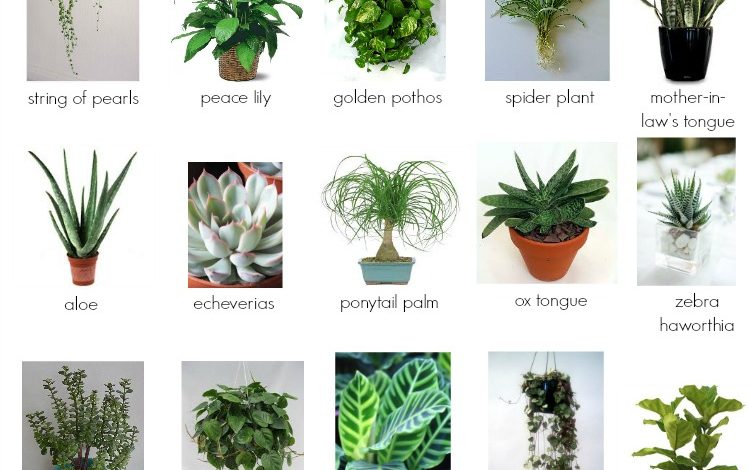
Tropical plants are those that have very brightly colored flowers and whose structure is quite striking.
Tropical plants are also known as exotic plants and today we show you which are some of the most interesting around the world
Ixora Coccinea
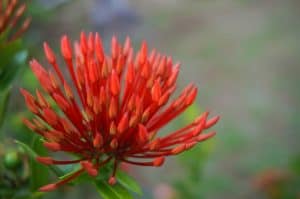 It is a very striking species due to the bouquet shape that its flowers acquire.
It is a very striking species due to the bouquet shape that its flowers acquire.
These are small in size, orange to red in color, and remain on the plant throughout the year in warm climates.
It can measure from one to three meters and tends to branch easily, being ideal for applying ornamental designs through pruning.
It is for this reason that it is widely used in direct sowing in the garden or in pots where they are placed on terraces or balconies.
Canna Indica
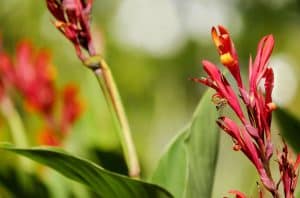 The canna indica is another of the most beautiful tropical species that exist and that makes very good specimens to keep close to the shores of natural water sources.
The canna indica is another of the most beautiful tropical species that exist and that makes very good specimens to keep close to the shores of natural water sources.
Its structure is bushy, so it does not grow very large, but the flowers that rise from the stems are what improve the visual representation.
These can vary in color, with red and other yellow varieties, which makes them very good for any composition.
Rivina Humilis
It is also known as Coralito and visually represents a true festival of colors.
The leaves are green and it produces small white flowers, but without a doubt the most special touch is given by the round, bright red berries.
The bushes are small, barely one meter tall, and in addition to their ornamental purpose, they are also used in some cultures for medicinal purposes.
Bird from paradise
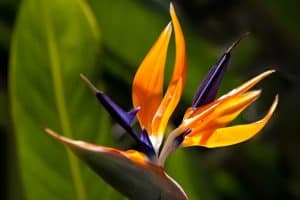 Within the enormous variety of tropical plants that exist, the bird of paradise or flower of paradise is one of our favorites.
Within the enormous variety of tropical plants that exist, the bird of paradise or flower of paradise is one of our favorites.
This is due to its shape and mix of colors. This tropical plant has the scientific name Strelitzia reginae.
Its name is due to the shape that the flowers manage to present when they open, being similar to the Bird of Paradise.
The colors are another of its attractions because they represent a true mix of shades that occupy yellow, blue, purple, even red or orange.
It is also short, barely reaching a maximum height of 60 cm, and is capable of withstanding cold, but not to the extreme.
Musaenda
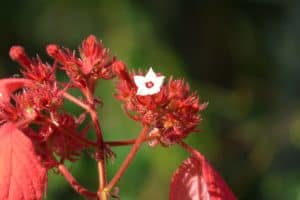 For those who want a shrub that catches all eyes in their garden, the musaenda is the ideal option.
For those who want a shrub that catches all eyes in their garden, the musaenda is the ideal option.
To achieve the look we want, constant pruning is necessary, but it will be well worth it.
It has very small, yellow flowers, but these are produced through leaves known as bracts.
These are part of the most beautiful of the plant because they are produced in pink in different shades.
Farfugium japonicum
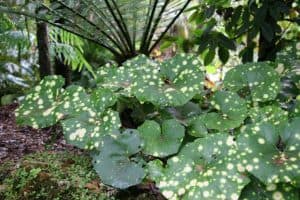 This tropical plant is also called Cape of the Queen or Beret of Basque, whose main characteristics are around the stems and leaves.
This tropical plant is also called Cape of the Queen or Beret of Basque, whose main characteristics are around the stems and leaves.
Although they do not grow very tall, the stems are very elongated and the leaves grow quite wide.
The green color of the leaves is bright and homogeneous and it also produces flowers with elongated yellow petals.
In some cases, the leaves may have white spots that do not indicate the presence of any disease.
dwarf palm
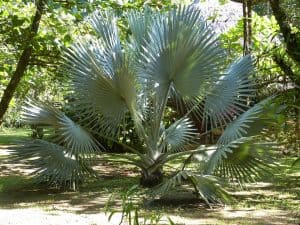 We cannot talk about tropical plants without mentioning a palm tree and this one is ideal for gardens because it grows little.
We cannot talk about tropical plants without mentioning a palm tree and this one is ideal for gardens because it grows little.
Although the trunk does not exceed a meter in many cases, the leaves add the necessary level of beauty by occupying 4 to 5 meters in length.
It generates small fruits and flowers, but they also help the plant to perform its ornamental function more effectively.
The most common is that the fruits are consumed by wild animals.
You may also be interested in: Plant a palm tree or grow palm trees in your garden.
heliconia rostrata
![]() It is one of the most striking varieties of exotic plants due to the shape of its flowers that grow vertically from the bottom up.
It is one of the most striking varieties of exotic plants due to the shape of its flowers that grow vertically from the bottom up.
These are made up of several compartments that help you store water and in each one are the colors red and yellow.
They grow from an elongated stem and are shed on both sides of it.
As for the leaves, they are also elongated and stand firm facing the sun, reaching a good size.
May Flower
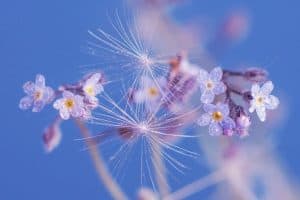 For those who love orchid -shaped species, the May flower will be an ideal choice.
For those who love orchid -shaped species, the May flower will be an ideal choice.
Its violet color and white and yellow center make it a very beautiful species that is used as decoration in gardens and for social events as well.
Although it requires a lot of care, for horticulturists around the world it is worth the effort when they observe its flowering.
Its tropical origin makes its roots adhere to the trunks of other trees, instead of to the ground as in other species.
Bamboo
 Who does not like to see these stems that are made so representative and useful? However, bamboo needs a lot of care.
Who does not like to see these stems that are made so representative and useful? However, bamboo needs a lot of care.
Due to the way it develops, they can occupy an entire area of land, so it will be necessary to place restrictions on it to avoid inconveniences.
Its uses in the market are variable and represent one of the ideal options for creating products with an ecological concept.
ferns
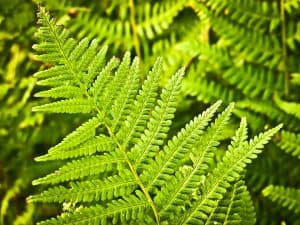 The bright and hopeful green is present with the ferns, a species that screams freshness everywhere.
The bright and hopeful green is present with the ferns, a species that screams freshness everywhere.
Small, neatly arranged leaves along stems give it a manicured, eye-catching appearance that will add a delicate touch to any garden.
Due to their shape and care needs, they can also be placed inside houses through the use of pots and as hanging plants in some cases.
bromeliad
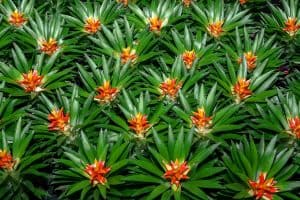 The bromeliad is a tropical plant with tiny leaves and a somewhat messy appearance. It is an ideal option for decorating interiors because it is not very demanding in its care.
The bromeliad is a tropical plant with tiny leaves and a somewhat messy appearance. It is an ideal option for decorating interiors because it is not very demanding in its care.
Although it is logical that tropical plants need abundant sunlight, in this case it performs well with artificial light from bulbs.
If you want it to take a certain shape, just pruning it with scissors will be more than enough.
croton
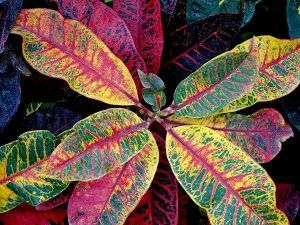 Croton ‘s mix of colors helps in interior and exterior decoration.
Croton ‘s mix of colors helps in interior and exterior decoration.
The leaves vary between purple and green, even appearing in some cases yellow and have a very resistant texture.
In terms of care, it is not very demanding, less with what has to do with sunlight, which is necessary to receive it directly.
Dieffembaquia
 The dieffembaquia is a tropical plant with large green leaves that are colored in the center with white touches that make it much more colorful.
The dieffembaquia is a tropical plant with large green leaves that are colored in the center with white touches that make it much more colorful.
In terms of cultivation, it is quite noble, requiring very little work from whoever sows it.
In fact, more than outdoors, it has become common to find it as part of interior decoration, adding a natural touch to spaces.
Zamioculca
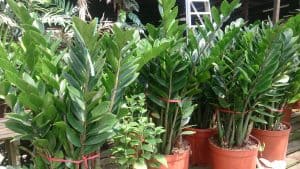 The zamioculca has a natural elegance.
The zamioculca has a natural elegance.
This tropical species is suitable for almost all situations, being very undemanding.
It has medium-sized leaves of an intense green color that grow from a vertically elevated stem, but that do not exceed one meter in height.
It needs little amount of water, it can grow in low light and its transplant should be done every two years. The rest, we will only have to enjoy it.
Aloe vera
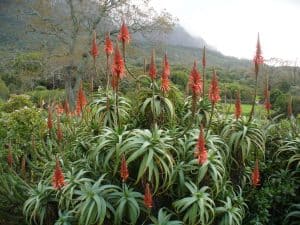 Aloe vera is a tropical plant whose uses are so varied that it has become one of the most valued species worldwide.
Aloe vera is a tropical plant whose uses are so varied that it has become one of the most valued species worldwide.
Its interior content has been useful to create from remedies to aesthetic products, being also an ideal complement for the garden.
It requires almost no maintenance, which makes it even more valuable for those who want a beautiful environment without having to work too hard on it.
Headband
 The ribbon owes its name to the structure of its leaves, which are thin and elongated, reaching curves when they are expanded.
The ribbon owes its name to the structure of its leaves, which are thin and elongated, reaching curves when they are expanded.
Perhaps one of the most valuable points that it has is that it adapts very well to almost any climate, requiring very little work from its caregivers.
The leaves are green but have a detail in the form of a yellow line in the middle that gives it a much more striking appearance.
Flowers do not grow on it, but with its leaves it obtains the ornamental design that we need.
Chlorophytum comosum
This tropical plant is a version similar to the tape but the variety of colors is different, being the exterior yellow and the interior green.
It can be worked in gardens, hanging baskets or pots depending on the interest of each user.
But it is more delicate in its care than the tape, since it needs sunlight, but not receive it directly because it could burn.
Peperomia
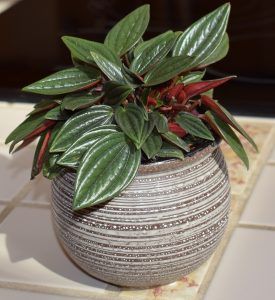 Leaves veined between dark green and light green is what this exotic plant of small size but great ornamental potential offers us.
Leaves veined between dark green and light green is what this exotic plant of small size but great ornamental potential offers us.
Although it is not usually very large, it does have thick foliage that will give the presence to decorate with a lot of attitude.
The peperomia needs humidity to be leafy and the best way to provide it is by spraying it.
peace lily
Another of the tropical plants that we can enjoy is the peace lily.
The bright green leaves plus white flowers that protrude through their stems are the most striking features of this species.
Although it is used mainly for ornamental purposes, it is also a great support for keeping the air in rooms clean.
Its flowering is indistinct from the season and it is generally very resistant.
caladium
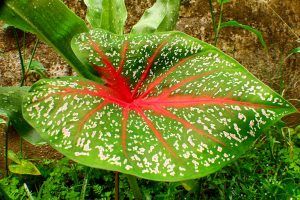 A wonderful plant, the Caladium, belonging to the Caladium genus, is a real visual treat for its beautiful large leaves painted deep red towards the center with gradient green edges.
A wonderful plant, the Caladium, belonging to the Caladium genus, is a real visual treat for its beautiful large leaves painted deep red towards the center with gradient green edges.
It is also known under the popular name of Heart of Jesus or Painter’s Palette. It is a gift of nature to take care of any of its 12 varieties, unique in the world, coming from Brazil, Guyana and other nations of South America.
Flower of the Passion
 The Passionflower, passion fruit plant or Passion Flower ( Passiflora caerulea), is a climbing tropical species of American origin, but whose fame has spread impressively in the world for its spectacular fruit and the exotic flower that it has.
The Passionflower, passion fruit plant or Passion Flower ( Passiflora caerulea), is a climbing tropical species of American origin, but whose fame has spread impressively in the world for its spectacular fruit and the exotic flower that it has.
In times of the so-called Conquest of the American continent, the Spaniards who saw it for the first time considered it a sign of good omen and assigned it a mystical relationship with the passion, life and death of Jesus Christ, represented by the different parts that make up its strange flower. and its life cycle, which seems to culminate in the winter but is resurrected in the spring.
Afelandra or Zebra Plant
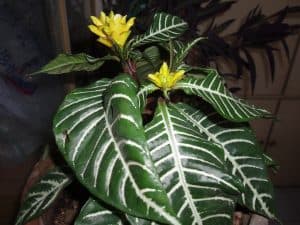 The species called Afelandra or Aphelandra squarrosa (also known as the zebra plant) belongs to the Acanthaceae family and comes from the warm regions of America. Most of the little more than 200 varieties of Afelandra identified are located in Brazil.
The species called Afelandra or Aphelandra squarrosa (also known as the zebra plant) belongs to the Acanthaceae family and comes from the warm regions of America. Most of the little more than 200 varieties of Afelandra identified are located in Brazil.
It usually gives us fabulous decorated effects indoors, thanks to its unique bracts and/or really beautiful yellow floral inflorescences.
Although it is a plant that does not exceed 80 cm in height, its leaves are large, very green and with white or thick cream veins that stand out. The stem is woody and herbaceous at the end.
Amazon Alocasia
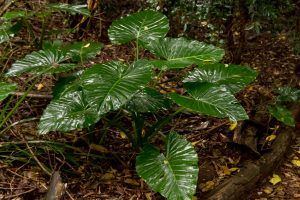 An exotic plant of great beauty belonging to the Marquesas family is the Amazonian Alocasia.
An exotic plant of great beauty belonging to the Marquesas family is the Amazonian Alocasia.
Popularly, it is also known as Elephant Ear.
There are about 70 varieties of this Perennial plant species, from the American continent, Asia and Oceania.
Moringa
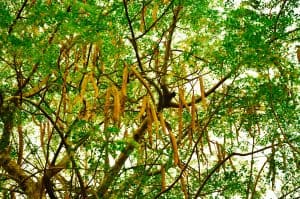 Moringa oleifera, known as moringa, ben, is a species of tree native to northern India.
Moringa oleifera, known as moringa, ben, is a species of tree native to northern India.
It grows in almost any type of soil, even in conditions of high seasonal aridity, which makes this plant a resource for the populations that live in these areas.”
In addition, the moringa tree has the characteristic of being fast growing and can reach between 9 and 13 meters in height, depending on the water, light and temperature it has had.
Moringa not only has innumerable beneficial properties, it is also a very beautiful plant because it flowers for much of the year and its branches hang down.
aracuria
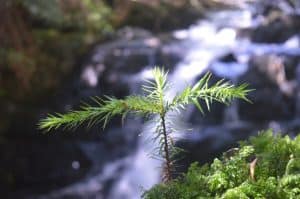 The Araucaria ((Araucaria araucana)[/su_highlight] is a tree belonging to the genus of conifers and we can also include it within the genus of tropical plants.
The Araucaria ((Araucaria araucana)[/su_highlight] is a tree belonging to the genus of conifers and we can also include it within the genus of tropical plants.
In ancient times and today it develops naturally in subtropical forests together with various species of conifers.
Its geographical distribution is mainly in the southern hemisphere in areas such as Brazil, New Guinea, Australia, Argentina, Uruguay, Paraguay and mainly in Chile. It has also been brought to parts of Europe and North America as an ornamental plant.
Rubber tree or Ficus Elastica
 The so -called rubber tree, Hevea brasiliense, is a plant belonging to the euphorbiaceae family.
The so -called rubber tree, Hevea brasiliense, is a plant belonging to the euphorbiaceae family.
Its origin is Asian, it settles in tropical forests. It is considered an epiphytic plant, which are those of slow growth that invade other vegetables, seized by their powerful roots.
Today we will talk about one of its varieties, the elastic or rubber ficus. Considered an ornamental plant, which is also fast growing
Ficus Benjamina
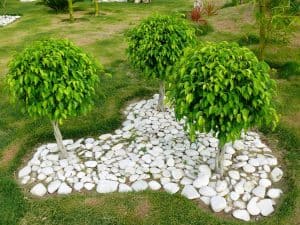 The Ficus Benjamina is one of the best known tropical plants in the world, which is grown both outdoors and indoors.
The Ficus Benjamina is one of the best known tropical plants in the world, which is grown both outdoors and indoors.
It comes from Southeast Asia and belongs to the Moraceae family and in many places it is simply called Ficus.
It has a large grayish-brown bark and does very well in a large pot.
The Syngonium
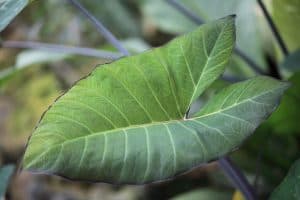 The Syngonium or arrowhead, a plant with the scientific name Syngonium, is recognized by the peculiarity of its large, arrow-shaped leaves and a dark green tone with whitish veins that give beautiful nuances to its pronounced nerves.
The Syngonium or arrowhead, a plant with the scientific name Syngonium, is recognized by the peculiarity of its large, arrow-shaped leaves and a dark green tone with whitish veins that give beautiful nuances to its pronounced nerves.
It is a plant that grows well indoors.
In addition, it can also be considered as an ornamental plant. It is also considered an invasive plant in some parts of the world.
The Kiwi
 The kiwi is originally from China, but was introduced at the beginning of the last century in New Zealand, a country with which it is commonly identified.
The kiwi is originally from China, but was introduced at the beginning of the last century in New Zealand, a country with which it is commonly identified.
It is one of the most famous tropical plants in the world.
It is an easy-to-grow fruit, especially if you live in a region with moderate winters, as this provides the necessary conditions for it to ripen.
While each vine can produce abundant fruit, generallyIt takes between three and seven yearsfor them to reach maturity.
If you are interested in planting kiwi plants, in this article we guide you to do it easily and effectively.
avocado
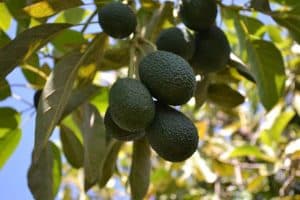 The avocado is a wonderful tree. It is becoming more and more fashionable due to the nutritional properties of its fruit, the avocado.
The avocado is a wonderful tree. It is becoming more and more fashionable due to the nutritional properties of its fruit, the avocado.
But… did you know that it is a tropical plant?
Growing an avocado is not difficult, but you must know the necessary steps.
Paradise Tree
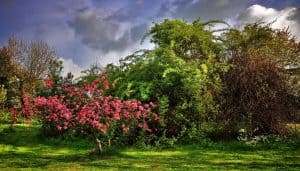 The Tree of Paradise is a tropical species that comes from the Asian continent and belongs to the deciduous family.
The Tree of Paradise is a tropical species that comes from the Asian continent and belongs to the deciduous family.
It has an average height of 15 meters, with a leafy crown that makes it ideal for producing good shade at your feet.
It blooms during spring and summer, with green leaves. During the autumn, the process of losing leaves happens, which first inks them yellow.
Washingtonia Robusta
 The Washingtonia Robusta (known as the Mexican Palm) is a palm -shaped plant that grows very well in warm regions.
The Washingtonia Robusta (known as the Mexican Palm) is a palm -shaped plant that grows very well in warm regions.
Its tall size allows you to enjoy good shade at your feet, which is why it is often used in some areas near the sea.
It has a rapid development, even from the fruiting of the seed, which makes it a fairly easy species to work with.
Agave
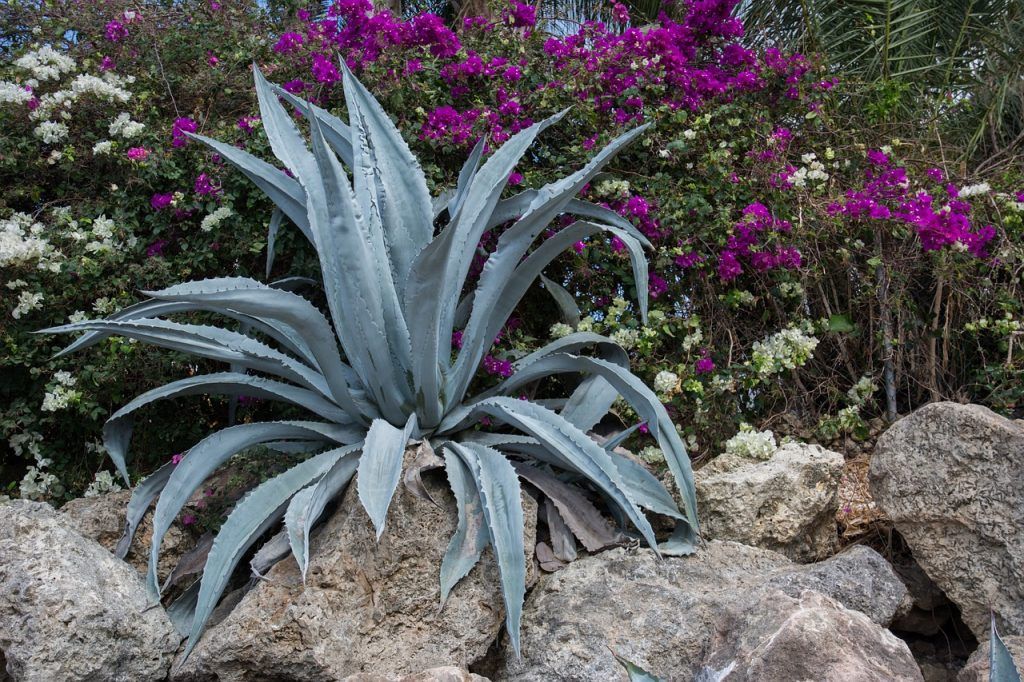
Agave is a genus of monocots native to hot, arid regions of America, although some species of Agave are also native to tropical South America.
The genus Agave (from the ancient Greek αγαυή, agauê) is mainly known for its succulent and xerophytic species that usually form large rosettes of strong and fleshy leaves.
Agave now includes species that were previously included in other genera, such as Manfreda, ×Mangave, Polianthes, and Prochnyanthes.
Plants in this genus can be considered perennials, as they require several to many years to mature and flower.
However, most Agave species are more accurately described as monocarpic or multiannual rosettes, as each individual rosette flowers only once and then dies; a small number of Agave species are polycarpic.
Maguey flowers are considered edible in many indigenous Mesoamerican culinary traditions.
Should tropical plants be fertilized?
Yes, some species benefit greatly from being fed correctly and from time to time.
A large percentage of indoor plants are of tropical origin. Whether you’re growing a split-leaf philodendron, coleus, orchid, ficus benjamina or African violet, you’ll be bringing a member of the tropical plant family into your home.
Tropical plants benefit from regular fertilization to keep them strong and healthy and produce the flowers you want.
Fertilize indoor tropical foliage plants with a balanced fertilizer once every two weeks between early spring and late summer, according to the Texas Master Gardener website. Purchase a plant food with an NPK ratio of 10-10-10 or higher and follow label directions for mixing and application.
Feed tropical potted plants grown outside for their foliage, such as dieffenbachia and philodendron, with a balanced plant food twice a year: in early spring, then in early summer. You can keep plants like these outside in the summer and bring them inside during the winter.
Fertilize tropical plants that grow in soil outdoors year-round with a balanced compost if you live in a tropical area. For example, bananas need a monthly feeding with a feed that has an NPK ratio of 8-10-8.
Give ripe bananas half a kilogram of fertilizer each time you feed them. Hibiscuses, on the other hand, require a frequent and light application of balanced compost. Different tropical plants have different needs, so it’s best to do some research to find out what’s best for the plants in your garden.
You can give flowering tropical houseplants, such as orchids, a dose of balanced fertilizer shortly after purchase or repotting. To encourage flowering, switch to a low-nitrogen plant food, or bloom enhancer, in spring or as soon as you notice small flower buds forming.
Tip: Tropical plants native to the area you live in need little or no additional fertilizer, apart from what they receive from the soil and the plant material that falls into their root zone.
Organic fertilizers, such as fish emulsion and worm droppings, are just as good for feeding tropical plants as chemical fertilizers.
Watch out!Avoid overfertilizing your tropical plants, because an excess of nutrients is worse for them than a lack of them.

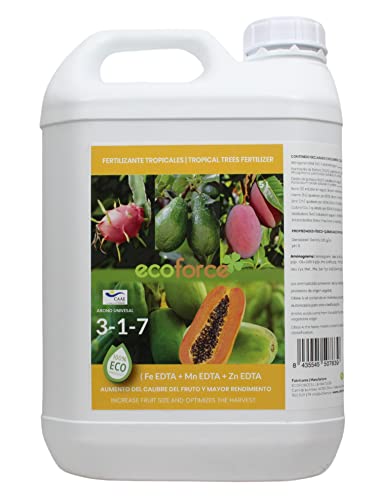
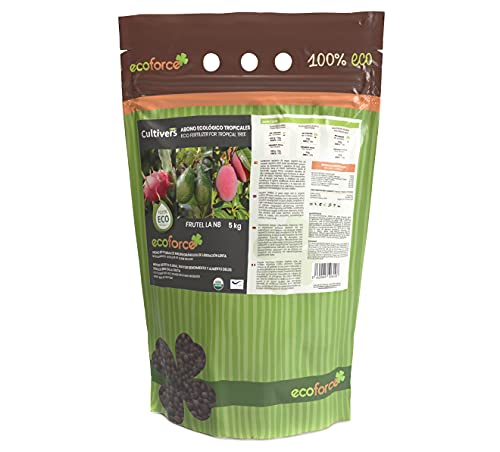

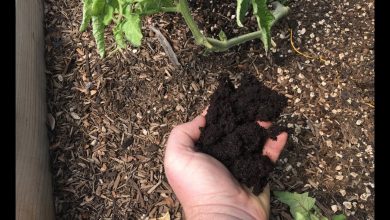
![Photo of Plant Andean Maca: [Pests, Irrigation, Land Preparation and More]](https://www.complete-gardening.com/wp-content/uploads/2022/08/plant-andean-maca-pests-irrigation-land-preparation-and-more-390x220.png)
![Photo of Aphids: [Characteristics, Effects, Detection and Treatment]](https://www.complete-gardening.com/wp-content/uploads/2022/08/aphids-characteristics-effects-detection-and-treatment-390x220.png)